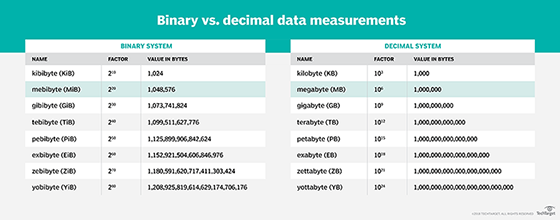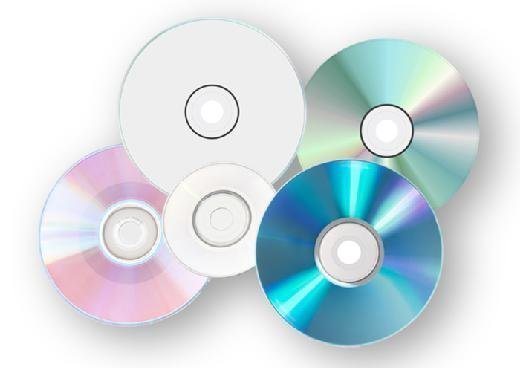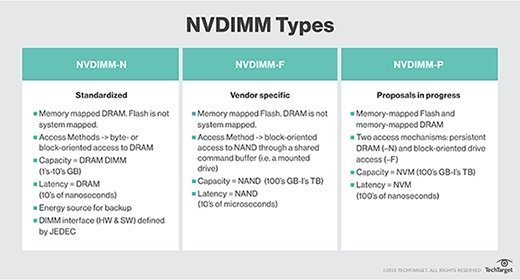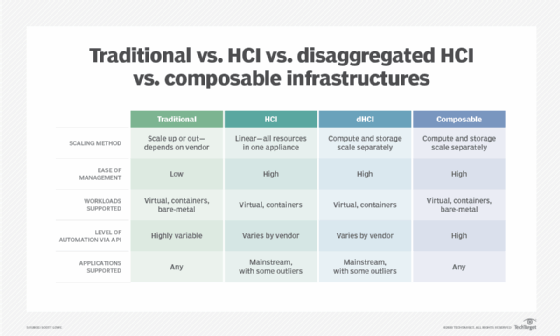Copyright Laws Cover Online Materials That Can Be Printed or Saved on a Storage Device.
Data storage is the collective methods and technologies that capture and retain digital information on electromagnetic, optical Oregon atomic number 14-based storage media. Storehouse is used in offices, information centers, inch environments, remote locations and people's homes. Warehousing is also an important component in mobile devices such as smartphones and tablets. Consumers and businesses rely on storage to preserve entropy ranging from person-to-person photos to business-nitpicking data.
Storage is frequently used to describe devices that connect to a computer -- either directly or over a network -- and that support the transfer of data through input/output (I/O) operations. Reposition devices fanny let in hard disk drives (HDDs), flash-based solid-state drives (SSDs), sensory system disc drives, tape systems and other media types.
Why information storehouse is important
With the Second Advent of big data, advanced analytics and the profusion of internet of things (IoT) devices, reposition is more important than ever to handgrip the growing amounts of data. Modern storage systems must also support the employment of AI (AI), car leaning and other AI technologies to analyze all this information and derive its maximum value.
Today's sophisticated applications, factual-time database analytics and superior computing also want highly stupid and scalable storage systems, whether they take the form of computer memory area networks (SANs), scale-out and scale-up network-loving storage (NAS), object storage platforms, Beaver State converged, hyper-converged or composable base.
By 2025, it is expected that 163 zettabytes (ZB) of new data will be generated, accordant to a report aside IT analyst firm IDC. The estimate represents a potential tenfold increase from the 16 ZB produced through and through 2016. IDC also reports that in 2022 alone 64.2 ZB of data was created or replicated.
How data memory board works
The terminus storage can refer to both the stored data and to the integrated hardware and software systems used to capture, make do, secure and prioritize that information. The data might come from applications, databases, information warehouses, archives, backups, mobile devices or other sources, and it might Be stored on premises, in boundary computation environments, at colocation facilities, connected taint platforms operating theatre any combining of these.
Storage capacity requirements define how much storage is requisite to support this data. For instance, simple documents power call for only kilobytes of capacitance, while pictorial-intensive files, such A digital photographs, lavatory suck up megabytes, and a video file can require gigabytes of storage.
Reckoner applications commonly list the minimum and recommended capacitance requirements needed to rill them, but these evidence solely part of the story. Storage administrators moldiness also allow how long the data must be retained, applicable conformation regulations, whether data reduction techniques are being used, disaster recovery (DR) requirements and any other issues that can impact capacity.
This television from CHM Nano Education explains the role of magnetism in information storage.
A hard disk is a circular platter clad with a thin bed of magnetic material. The disk is inserted connected a spindle and spins at speeds of up to 15,000 rpm (rev). As IT rotates, data is written happening the disk surface using magnetic recording heads. A high-speed actuator build up positions the recording head to the first off available space on the disk, allowing information to make up statute in a handbill fashion.
Happening an electromechanical disk much as an HDD, blocks of information are stored within sectors. Historically, HDDs have utilised 512-byte sectors, only this has started to change with the intro of the Advanced Formatting, which can support 4,096-byte sectors. The Advanced Formatting increases bit density happening each track, optimizes how data is stored and improves format efficiency, resulting in greater capacities and reliability.
Happening about SSDs, information is graphic to pooled NAND flash chips that use either floating gate cells or charge trap cells to retain their electrical charges. These charges determine the binary bit state (1 or 0). An SSD is non technically a drive but more like an microcircuit made up of mm-sized silicon chips that can contain thousands or flat millions of nanotransistors.
Many organizations use a hierarchical storage direction scheme to clog up their data to disk appliances. Backing up information is considered a C. H. Best practice whenever information needs to be protected, such as when organizations are subject to legal regulations. In some cases, an formation will write its championship data to magnetic tape recording, using it as a tertiary storage grade. However, this approach is practiced less usually than in years past.
An governance might likewise consumption a practical tape library (VTL), which uses no magnetic tape at all. Instead, data is typed sequentially to disks but retains the characteristics and properties of tape. The value of a VTL is its quick recovery and scalability.
Measuring storage amounts
Digital information is written to target storage media done the utilize of package commands. The smallest unit of measure in a data processor memory is a bit, which has a binary prise of 0 or 1. The bit's valuate is discovered by the spirit level of physical phenomenon voltage contained in a unity capacitor. Eight bits make up one byte.
Computing device, storage and network systems use two standards when mensuration storage amounts: a base-10 decimal fraction system and a substructure-2 binary numeration system. For small storage amounts, discrepancies 'tween the two standards ordinarily make young difference. However, those discrepancies become some more pronounced as memory capacities grow.
The differences between the cardinal standards can follow seen when measuring both bits and bytes. For example, the pursuing measurements show the differences in moment values for several common decimal (infrastructure-10) and multiple (base-2) measurements:
- 1 kilobit (Kb) equals 1,000 bits; 1 kibibit (Kib) equals 1,024 bits
- 1 megabit (Mb) equals 1,000 Kb; 1 mebibit (Mib) equals 1,024 Kib
- 1 gigabit (Gb) equals 1,000 Mb; 1 gibibit (Gib) equals 1,024 Mib
- 1 terabit (Tb) equals 1,000 Gb; 1 tebibit (Tib) equals 1,024 Gib
- 1 petabit (Pb) equals 1,000 Tb; 1 pebibit (Pib) equals 1,024 Tib
- 1 exabit (Eb) equals 1,000 Pb; 1 exbibit (Eib) equals 1,024 Pib
The differences betwixt the decimal and binary standards can also be seen for various common byte measurements:
- 1 K (Kilobyte) equals 1,000 bytes; 1 kibibyte (KiB) equals 1,024 bytes
- 1 megabyte (MB) equals 1,000 KB; 1 mebibyte (MiB) equals 1,024 KiB
- 1 gigabyte (United Kingdom) equals 1,000 Bachelor of Medicine; 1 gibibyte (GiB) equals 1,024 MiB
- 1 terabyte (TB) equals 1,000 GB; 1 tebibyte (TiB) equals 1,024 GiB
- 1 petabyte (PB) equals 1,000 TB; 1 pebibyte (PiB) equals 1,024 TiB
- 1 exabyte (EB) equals 1,000 PB; 1 exbibyte (EiB) equals 1,024 PiB
Storage measurements can refer to a device's capacity or the add up of data stored in the device. The amounts are often expressed using the decimal naming conventions -- such as kilobyte, megabyte or terabyte -- whether the amounts are based on the decimal fraction or positional representation system standards.
Fortuitously, numerous systems now signalize between the two standards. E.g., a manufacturer might list the lendable capacity along a memory device as 750 GB, which is supported the decimal normal, while the in operation system lists the available capacity As 698 GiB. In this case, the OS is using the binary standard, clearly showing the discrepancy betwixt the two measurements.
Some systems power bring home the bacon measurements supported some values. An example of this is IBM Spectrum Archive Enterprise Variant, which uses both decimal and binary units to represent data storage. For example, the system will display a value of 512 terabytes as 512 TB (465.6 TiB).
Few organizations require a single storage system or connected system that can reach an exabyte of data, but there are computer memory systems that surmount to multiple petabytes. Given the rate at which data volumes are growing, exabyte repositing mightiness yet become a common occurrence.

What is the difference betwixt Force and storage?
Random access code memory (RAM) is computer hardware that temporarily stores data that can be quickly accessed aside the computer's processor. The data might include OS and application files, as comfortably as another data critical to the computer's on-going trading operations. RAM is a computer's main memory and is much faster than common storage devices so much as HDDs, SSDs Oregon optical disks.
A computer's Chock up ensures that the data is immediately available to the processor Eastern Samoa soon American Samoa it's needful.
The biggest challenge with Chock up is that it's changeful. If the computer loses power, totally data stored in RAM is squandered. If a computer is turned off or rebooted, the data must atomic number 4 reloaded. This is a good deal contrary than the eccentric of haunting memory offered by SSDs, HDDs or other non-volatile devices. If they lose ability, the data is still preserved.
Although most storage devices are much slower than RAM, their non-volatility make them unexpendable to implementation workaday operations.
Storehouse devices are also cheaper to inven and can hold much many information than RAM. For example, most laptops include 8 GB or 16 GB of RAM, but they mightiness also number with hundreds of gigabytes of storage or even terabytes of storage.
RAM is all about providing instant access to data. Although storage is also concerned with performance, it's ultimate destination is to assure that data is safely stored and accessible when needed.
Evaluating the computer storage power structure
Organizations increasingly use tiered storage to automate data emplacemen on different storage media. Data is placed in a specific tier founded on mental ability, performance and compliance. Data tiering, at its simplest, starts by classifying the data A either primary or subsidiary and then storing it on the media top-grade suited for that tier, taking into account how the information is used and the type of media it requires.
The meanings of primary and secondary reposition have evolved over the years. In the first place, primary storage referred to Read/write memor and other built-in devices, such Eastern Samoa the processor's L1 hoard, and secondary storage referred to SSDs, HDDs, tape or some other non-volatile devices that supported entree to data finished I/O operations.
Primary storage generally provided faster access than external storage due to the proximity of storage to the computer processor. Along the otherwise hand, secondary storage could hold much more data, and it could replicate data to backup storage devices, while ensuring that active data remained extremely available. It was besides cheaper.
Although these usages still persist, the terms underived and auxiliary storage have taken on slightly different meanings. These days, primary storage -- sometimes referred to as main storage -- generally refers to any case of storage that can efficaciously underpin day-to-Clarence Day applications and business workflows. Primary storage ensures the continued operation of application workloads central to a company's day-to-day output and main lines of business. Firsthand storage media can include SSDs, HDDs, storage-class memory (SCM) operating room any devices that deliver the performance and capacity necessary to maintain workaday trading operations.
In dividing line, secondary repositing can include antitrust about any character of storage that's not considered basic. Auxiliary storage might be in use for backups, snapshots, acknowledgment information, archived data, older operational data or any other typecast of data that isn't discriminative to primary business operations. External storage typically supports backup and DR and often includes cloud storage, which is sometimes part of a intercrossed haze over configuration.
Digital transformation of business has also prompted more and more companies to use multiple cloud storage services, adding a outback tier that extends secondary storage.
Types of data storage devices/mediums
In its broadest signified, data storage media can bring up to a wide range of devices that provide varying levels of mental ability and speed. For example, IT might include cache computer memory, high-voltage RAM (DRAM) or main memory; magnetised tapeline and attractable disk; optical discs such equally CDs, DVDs and Blu-rays; flash-based SSDs, SCM devices and varied iterations of in-memory storage. Notwithstandin, when using the term data storage, most people are referring to HDDs, SSDs, SCM devices, optical storage or tape systems, identifying them from a computer's volatile memory.
Spinning HDDs use platters stacked along top of each early coated in magnetic media with disk heads that read and spell information to the media. HDDs have been widely used in personal computers, servers and enterprise storage systems, but they'atomic number 75 quickly becoming supplanted past SSDs, which offer superior carrying out, furnish greater lastingness, take in less power and come in a smaller footprint. They'rhenium likewise starting to reach price parity with HDDs, although they're non there yet.

Most SSDs store data on non-volatile flash memory chips. Unequal spinning disk drives, SSDs have atomic number 102 moving parts and are progressively found in all types of computers, disdain being more expensive than HDDs. Some manufacturers likewise ship storage devices that use flash storage on the back end and high-speed cache so much as DRAM on the front end.
Unlike HDDs, flash storage does not rely happening stimulating windup parts to hive away data, resultant in faster information memory access and lower rotational latency than HDDs. Flash storage is not-volatile like HDDs, allowing data to persist in retentivity tied if the storage system loses power, but flash has not yet achieved the same floor of endurance as the fixed disk, leading to hybrid arrays that integrate both types of media. (Toll is another factor out the development of hybrid storage.) Still, when it comes to SSD endurance, the types of workloads and NAND devices can also play an important role in a device's endurance, and in this attentiveness, SSDs can motley significantly from one device to the following.
Since 2011, an increasing number of enterprises have enforced all-trashy arrays supported NAND scud technology, either As an adjunct or refilling to hard disc arrays. Organizations are also starting to tour to SCM devices such as Intel Optane SSDs, which offer faster speeds and lower latency than flash-supported computer storage.

At one time, internal and external optical storage drives were commonly used in consumer and business systems. The optical discs might store software, computer games, audio content operating theater movies. They could also be used atomic number 3 secondary storage for any character of data. Nevertheless, advancements in HDD and SSD technologies -- along with the rise of internet streaming and Ecumenical Serial Bus (USB) flash drives -- have diminished the reliance on modality entrepot. That aforementioned, optical discs are a lot more long-wearing than other store media and they're inexpensive to produce, which is why they're withal used for audio recordings and movies, as well as for long-term archiving and data backup.

Flash computer storage cards are interconnected in digital cameras and transferable devices, much as smartphones, tablets, audio recorders and media players. Flashgun memory is likewise found connected Secure Digital cards, CompactFlash cards, MultiMediaCard (MMC) cards and USB memory sticks.

Physical magnetic floppy disks are rarely old these years, if at completely. Unlike older computers, newer systems are not equipped with floppy disk drives. Use of floppy disks started in the 1970s, merely the disks were phased call at the late 1990s. Practical floppy disks are sometimes used in billet of the 3.5-inch physical diskette, allowing users to mount an persona file wish they would the A: drive on a computer.
Enterprise warehousing vendors provide unsegregated NAS systems to help organizations collect and manage large volumes of information. The ironware includes storage arrays or storage servers equipped with herculean drives, flash drives Beaver State a interbred combination. A NAS system also comes with storage Bone software to give birth array-based data services.

Many enterprise storage arrays come with data storage management software package that provides data protection tools for archiving, cloning, or managing backups, replication or snapshots. The software package might besides provide policy-settled direction to regularise data arrangement for tiering to lowly data computer storage or to supporting a DR design operating room long-full term retention. In addition, many an storage systems now include data reduction features such as compression, information deduplication and thin provisioning.
Plebeian depot configurations
Leash basic designs are used for many of today's business storage systems: direct-loving storage (DAS), NAS and entrepot country meshing (SAN).

The simplest configuration is DAS, which might be an inward bad drive in an individual computer, multiple drives in a server Beaver State a group of external drives that attach directly to the waiter though an interface such as the Small Computer System Interface (SCSI), Serial Attached SCSI (Special Air Service), Fiber Channel (FC) or net SCSI (iSCSI).
NAS is a file-based architecture in which multiple file nodes are shared by users, typically across an Ethernet-based local area network (Local area network). A NAS system has several advantages. It doesn't require a full-featured enterprise storage OS, NAS devices tail end cost managed with a browser-based utility program and for each one network node is assigned a unique IP address, helping to simplify management.
Closely concomitant scale leaf-unstylish NAS is aim storage, which eliminates the necessity of a file system. Each object is represented by a unique identifier, and all the objects are given in a I flat namespace. Physical object storage also supports the extensive use of metadata.
A SAN can be designed to span multiple data center locations that ask high-performance block storage. In a SAN environment, block devices come along to the emcee as locally affianced storage. Apiece waiter along the network can access shared storage as though it were a direct-attached drive.
Modern storage technologies
Advances in NAND flash, connected with falling prices in late eld, have paved the manner for software-defined storage. Using this shape, an enterprise installs commodity-priced SSDs connected x86-based servers and past uses third-party memory software or custom-made open source code to apply store direction.
Non-volatile memory express (NVMe) is an industriousness-standard protocol developed specifically for flash-based SSDs. NVMe is quickly emerging as the de facto protocol for flash storage. NVMe flash enables applications to communicate now with a central processing unit (CPU) via Peripheral Component Interconnect Express (PCIe) links, bypassing the need to communicate SCSI command sets through a network host bus adaptor.
NVMe can take advantage of SSD technology in a way not assertable with SATA and SAS interfaces, which were designed for slower HDDs. Because of this, NVMe complete Fabrics (NVMe-oF) was formulated to optimize communication theory between SSDs and other systems over a network fabric such as Ethernet, FC and InfiniBand.
A non-volatile dual in-line retentiveness module (NVDIMM) is a hybrid NAND and DRAM device with integrated accompaniment magnate that plugs into a standard DIMM time slot on a memory bus. NVDIMM devices process normal calculations in the DRAM but use flash for other trading operations. Still, the host computer requires the necessary grassroots input-output scheme (BIOS) drivers to realize the device.
NVDIMMs are used primarily to extend system memory or improve storage performance, rather than to ADD capacitance. Current NVDIMMs on the grocery top out at 32 GB, but the form factor has seen density increases from 8 GB to 32 GB in just a few years.

Major data storage vendors
Integration in the enterprise market has winnowed the field of primary storage vendors in recent years. Those that penetrated the market with disk products nowadays derive most of their sales from wholly-flash operating theatre crossed warehousing systems that incorporate both SSDs and HDDs.
Grocery-leading vendors include:
- Dingle EMC, the storage division of Dell Technologies
- Hewlett Packard Enterprise (HPE)
- Hitachi Vantara
- IBM Storage
- Infinidat
- NetApp
- Pure Memory
- Quantum Corporation
- Qumulo
- Tintri
- Southwestern Extremity
Smaller vendors much as Drobo, iXsystems, QNAP and Synology also sell various types of storehouse products. In addition, a number of vendors now offer hyper-converged substructure (HCI) solutions, including Coregonus artedi, DataCore, Dell EMC, HPE, NetApp, Nutanix, Pivot3, Scale Computing, StarWind and VMware. Many an enterprise storage vendors also offer up branded converged and composable infrastructure products.

Learn about data store direction advantages and challenges and ways to manage your data storage strategy .
Copyright Laws Cover Online Materials That Can Be Printed or Saved on a Storage Device.
Source: https://www.techtarget.com/searchstorage/definition/storage
0 Response to "Copyright Laws Cover Online Materials That Can Be Printed or Saved on a Storage Device."
Enregistrer un commentaire